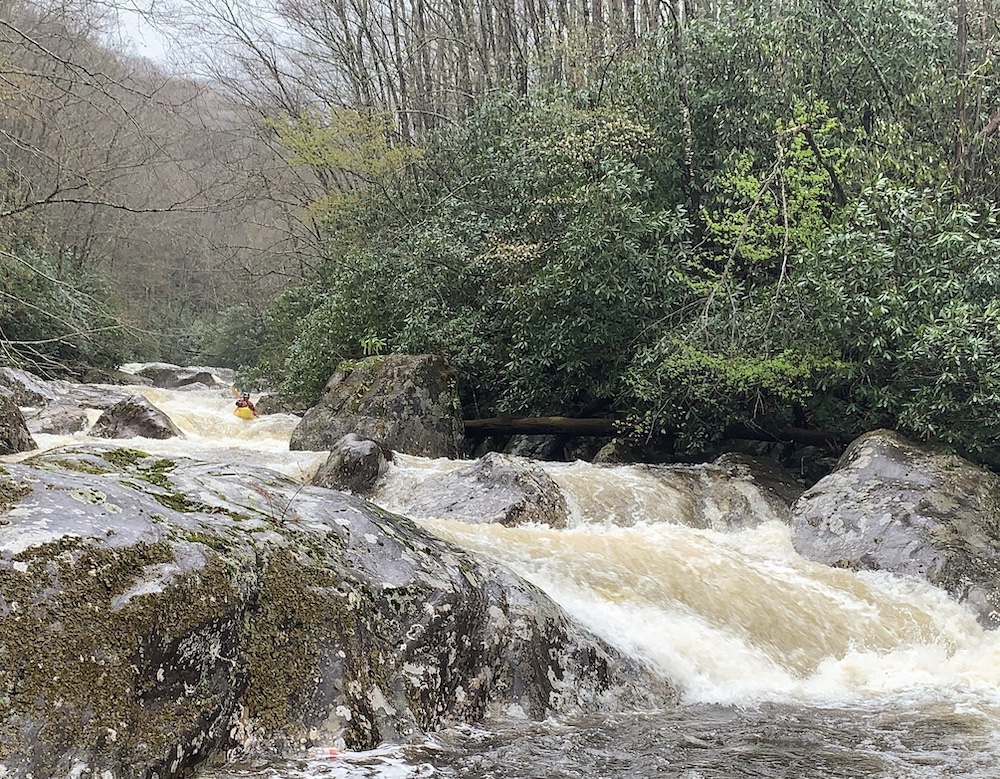
New NC Forest Plan, Cause for Both Celebration and Disappointment
On February 17, 2023, the US Forest Service released their long awaited new management plan for the 1.1 million acre Nantahala Pisgah National Forest, which will set the course of federal management of the area for the next two decades or longer. The Nantahala Pisgah Forest Partnership (the Partnership), a collaborative group of which American Whitewater is an active member, has spent the past decade developing recommendations for the Plan to improve the management of the Forest. The Plan has both reasons for celebration and reasons for concern when it comes to the future of these special lands and the rivers that flow through them. While we’ll be doing a deep analysis of the Plan, we have some early reflections to share.
The Forest is a biodiversity hotspot of global significance and a recreational treasure located in Western North Carolina. This landscape is resplendent with whitewater paddling opportunities thanks to staggering amounts of rainfall, the tallest mountains in the Eastern US, and diverse rock strata carved by frigid clean water into ancient bedrock riverbeds. This area is also the homeland of the Cherokee, and continues to play an important role in Cherokee culture. This National Forest has more visitors than all but a couple National Parks, and is a significant economic driver of the region. All of these factors contribute to the importance of this special place.
Wild and Scenic River Wins: A very bright spot in the new plan is the addition of nine outstanding rivers and streams that are newly protected in the plan based on fresh findings that they are eligible for Wild and Scenic designation. New protections total 46 stream miles and 14,720 acres of river corridors. This outcome doubles the number of eligible streams in the Forest Plan, and was a major goal of American Whitewater. American Whitewater and the Partnership filed objections to the draft plan seeking additional streams, and were successful in securing new protections for the North Fork of the French Broad river through the objection process. Sadly the streams in Panthertown Valley were not found eligible. The newly eligible streams are: The North Fork French Broad River, Thompson River, Whitewater River, West Fork Pigeon River, Flat Laurel Creek, South Toe River, Fires Creek, Santeetlah Creek, and the Cullasaja River. Paddlers will recognize these streams as some of the finest whitewater paddling and most beautiful streams in the southern Applachians. A big thanks to all the paddlers and partners that helped earn protection for these streams!
Other Conservation Highlights: The plan includes a total of 49,000 acres of new recommended Wilderness. While a portion of that acreage is already under Congressional protection, roughly 34,000 acres are gaining new protected status. The Plan also recognizes the special scenic and recreational values of the Craggy and Big Ivy area, albeit less acreage of that area than the public requested.
Consensus Approach Not Adopted: The Nantahala Pisgah Forest Partnership pitched the Forest Service an innovative set of recommendations that would have led to more interests being met on the Forest more quickly with less conflict. These recommendations included which lands should be open to active management like logging versus set aside for more passive management, how old growth and biodiversity can be best protected and restored, how to move multiple interests forward at a similar pace, and how recreation should be managed to be both inviting and sustainable. The Forest Service at best cherry-picked these recommendations, which is a disappointing response to such an intensive collaborative effort.
Recreation Results Mixed, Chattooga Limits Remain: The new plan does better on trail management, and offers trail users some opportunities for improvements. However, the Forest Service chose to ignore significant recreational opportunities like easing the limits on paddling on the Upper Chattooga and improving rock climbing management guidelines. We would like to thank the many diverse groups on the Partnership for their universal support in easing Chattooga limits. It is profoundly disappointing that the Forest Service ignored this broad public support for easing the boating limits, especially considering that 11 years of monitoring data show no need for the paddling limits to be kept in place. Agency staff chose to avoid the issue entirely in their analysis, yet included the old limits in the new plan.
What’s Next?
One thing that the Forest Planning process showed is that there is broad support for Wild and Scenic River protections in the area. American Whitewater is going to continue working with our partners and local communities to support congressional Wild and Scenic River designation efforts. A similar effort is cued up to designate a broadly supported protected area in the Big Ivy watershed. Stay tuned for opportunities to support these efforts!
Another thing we’ve learned is that there are a lot of opportunities to keep collaborating on Forest management in the area. This should translate to improved trails and river access areas, more creation of diverse habitat for wildlife, and more benefits for communities near the Forest. The community of people that came together to support the Forest planning process aren’t going anywhere, and the common ground we’ve found will lead to better Forest management for decades to come.
Thank you to all the paddlers who spoke up for rivers during the planning process, and for all the other folks out there who supported paddling and rivers throughout the process.
